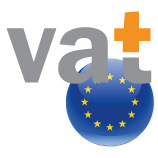VAT gap in the European Union
 by Anthony Kerr, getsix.eu, Wrocław, Poland
by Anthony Kerr, getsix.eu, Wrocław, Poland
17 October 2017
The EU recently announced the latest analysis of missing EU VAT (the ’VAT Gap’) from fraud, bankruptcies and poor administration, has fallen to €151.5 billion in 2015, comparing to €160 billion in 2014. The most recent estimation of unaccounted for VAT represents 12% of the projected collections based on economic activity and VAT rates across the 28 EU Member States. This is a 2.1% closing on the previous years’ gap. Italy accounts for almost a quarter of the missing EU VAT.
Below are some highlights from the latest, 2015 VAT Gap analysis:
- Italy accounts for 23% of the €151.5 billion of absent VAT in the EU,
- Sweden has the least VAT Gap, at 1.4%, even with having the second highest EU VAT Rate at 25%,
- The largest gap at 37.2% of expected VAT revenues is Romania, Slovakia at 29.4% and Greece with 28.3%,
- While the UK’s VAT Gap increased from €18.7 billion to €22.2 billion,
- The VAT Gap decreased in most Member States with the strongest improvements in Malta, Romania and Spain,
- 7 Member States saw small increases: Belgium, Denmark, Ireland, Greece, Luxembourg, Finland and in the UK.
A range of reforms has been planned by the EU regarding the EU VAT administration, enclosed within its VAT Action Plan. This October, the European Commission (EC) will set-out proposals for the most far-reaching update to the EU’s VAT rules in 25 years. VAT fraud should become easier to tackle and VAT collection more efficient. Included will be more distribution of information cross-border, with the new system cross-border fraud should reduce by 80% and the move to a destination based tax system in 2021. Countries have been active too, announcing the reverse charge in fraud-sensitive sectors, and the split payments in countries such as Italy, Romania and Poland.
The EC said the scale of the tax gap “demonstrates the need for serious reform, so that Member States can make full use of VAT revenues for their budgets. While the collection of VAT revenues shows some signs of improvement, the missing amounts remain unacceptably high,” they said.
Member States should not accept such shocking losses of VAT revenues. While the Commission is supporting efforts to improve collection throughout the EU, current VAT rules date from 1993 and are outdated. We will soon propose to revamp the rules governing VAT on cross-border sales. Our reform will help cut cross-border VAT fraud by 80% and get badly-needed money back to Member State coffers.
(Mr Pierre Moscovici, Commissioner for Economic and Financial Affairs, Taxation and Customs)
Concerning the VAT Gap, the EC works with all 28 Member States to resolve forecasts of VAT that should be collected against actual receipts. The VAT receipt forecasts, known as ‘VAT Total Tax Liability’ (VTTL), is based on national VAT rates applied to recorded sales of taxable supplies.
Reasons for the difference between VTTL and actual VAT receipts include:
- VAT Fraud
- VAT planning to lower liabilities
- Poor tax administrative procedures
- VAT debtors going into liquidation
amavat® provides a one-stop-shop solution for VAT Compliance within Europe. We assist clients with a single point of contact that speaks their language and handles all VAT related issues with a standard and cost efficient approach.
If you have any queries or questions, please do not hesitate to contact amavat®.
To find out more information please visit www.amavat.eu













